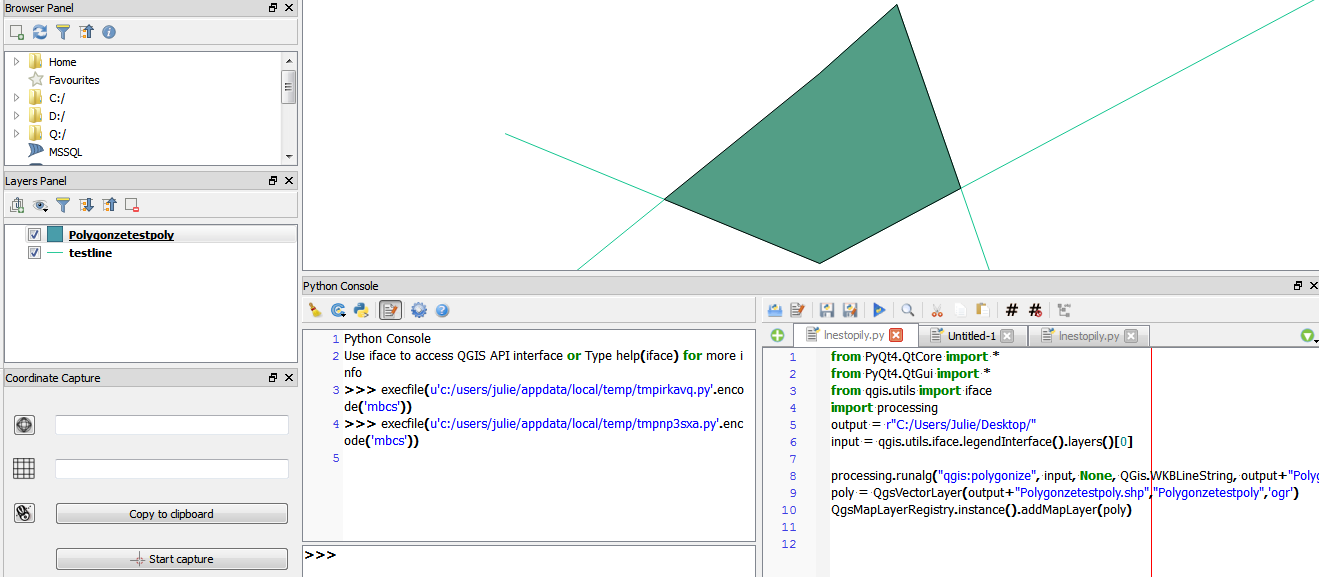In QGIS 2.12.3 I have a small shapefile with lines (as often occurs in parcel boundary datasets) of 2 vertices each, snapped to each other (no topology errors, no dangles, no intersections). But the "Lines to Polygons" (screenshot) tool doesn't produce any polygons (in contrast to the two expected polygons).
What am I doing wrong or what am i having to do to make this tool work properly? (I'm checking out 2.14. tomorrow...) I know that in PostGIS the ST_Polygonize works pretty well, but importing my data to PostGIS first or any other workaround seems not a staightforward solution to me.


